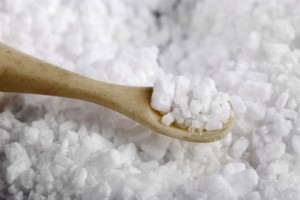Research Chemical Addiction
 In 2008, in a study published in the journal Substance Use and Misuse, researchers attempted to determine how often young people chose to use drugs labeled “research chemicals,” and why they would choose to do so. Researchers found that the use was somewhat spontaneous, with young people reporting that they took the drugs while they were at a concert, and that they hadn’t planned to take the drug before they did so. Researchers also found that few teens took the drugs on a repeat basis. This all might seem like very good news, but unfortunately, a few years can make a world of difference when it comes to drugs. Where research chemicals were once considered recreational drugs, used only by a few people on a whim, evidence suggests that many people are now taking research chemicals on a repeated basis, and developing strong addictions as a result.
In 2008, in a study published in the journal Substance Use and Misuse, researchers attempted to determine how often young people chose to use drugs labeled “research chemicals,” and why they would choose to do so. Researchers found that the use was somewhat spontaneous, with young people reporting that they took the drugs while they were at a concert, and that they hadn’t planned to take the drug before they did so. Researchers also found that few teens took the drugs on a repeat basis. This all might seem like very good news, but unfortunately, a few years can make a world of difference when it comes to drugs. Where research chemicals were once considered recreational drugs, used only by a few people on a whim, evidence suggests that many people are now taking research chemicals on a repeated basis, and developing strong addictions as a result.
Clever Packaging
Research chemicals, as sold on the drug market today, have very little to do with scientific research. However, some of these drugs got their start when chemists working in reputable laboratories attempted to determine how drugs of addiction worked on a chemical level. It was hoped that this research would enable experts to develop new therapies in the fight against addiction, and perhaps spare people from harm in the process. As an article in the journal Addiction makes clear, however, these products quickly moved from the lab out into the street. The article states, “Some of the synthetic chemicals … have, in a few months, gone from being virtually unknown research chemicals, for which forensic science laboratories had difficulties in identifying and obtaining reference samples, to being commercially marketed in their own right. For those with the right knowledge, significant amounts of highly psychoactive chemicals can be obtained cheaply and legally with a few clicks of a mouse.” What was once used in the fight against addiction became an addictive substance in its own right.
It might be surprising, to some, that these powerful drugs would be considered legal in most parts of the country. Unfortunately, that does seem to be the case. The ingredients in research chemicals are slightly different than traditional drugs of abuse, and as a result, the laws that pertain to drugs of abuse typically do not pertain to research chemicals. They are just not the same drugs, and so they are considered legal. In addition, manufacturers often place deceptive terms such as “not for consumption” or “for research only” on the packages that contain research chemicals. As a result, people who take these drugs are at their own risk when it comes to harm. The manufacturers claim that the drugs aren’t really drugs at all, but are instead benign chemicals that should be used in a laboratory for experiments. It’s a sneaky rhetorical trick, but again, it can help manufacturers to evade the law as it implies that the drugs were never intended to be used as drugs.
From Use to Abuse
Research chemicals might be considered legal in some parts of the country, but that legality doesn’t make the drugs safe. Some people who take the drugs report terrible side effects, such as:
Side Effects of Research Chemicals
- Nausea
- Vomiting
- Diarrhea
- Hallucinations
- Disorientation
This might keep some people from using the drugs again, but unfortunately, there are some people who don’t experience side effects and who do experience pleasurable sensations while on research chemicals. For these people, the use of the drugs is only fun and relaxing, and they may see no harm in using the drug repeatedly. It’s relatively easy to find the drug online, and prices are remarkably low. As a result, people can take these drugs repeatedly without breaking their budget and causing family members alarm. Many people are choosing to do just that. For example, according to a study in the journal Addiction, of those who use research chemicals, 15.1 percent report that they use the drug weekly or more frequently. For these power users, simple drug taking can quickly become compulsive drug abuse.
There’s no specific line in the sand where research chemical use becomes research chemical addiction. In fact, it can be difficult for family members to know when the people they love have moved from recreational use to dangerous addiction. In general, there are some guidelines that can be helpful for people who are attempting to determine if the person they love needs help. The key to understanding an addiction is to understand that the use of the drug is compulsive when an addiction has taken hold. The person can no longer control, with any kind of accuracy, the use of research chemicals. A person in the throes of addiction might:
- Take drugs first thing in the morning
- Use drugs at work
- Lie about drug use
- Become defensive when asked about drug use
While anyone who is taking research chemicals is taking chances with health and happiness, people who show the signs listed above might be moving from using the drug to abusing the drug, and help might make a big difference for them.
Learning the Dangers
Talking about drug use with a loved one is never easy. In fact, it might seem easier to simply ignore the problem and hope that it will resolve on its own, without any interference whatsoever. When it comes to research chemicals, however, the drugs are simply too powerful and too dangerous to ignore. Outlining the dangers represented by just a few ingredients contained in research chemicals might make this danger easier to understand.
Research chemicals sometimes contain pipradrol. According to research published in the journal Toxicology Letters, this substance has been known to cause damage to the cardiovascular system as well as the central nervous system. These changes can be remarkably persistent, appearing in people long after they’ve stopped taking the drug. People who take research chemicals with this ingredient could be causing an immense amount of damage to their bodies, and this damage might be difficult for them to recover from or deal with.

Unfortunately, people who buy research chemicals may not even know what ingredients make up the drugs they are taking. For example, according to an article in the European Journal of Clinical Pharmacology, five cases of toxicity due to the chemical D2PM were reported, although all five people reported that they didn’t actually purchase D2PM. As this article makes clear, research chemicals can contain strong and dangerous chemicals, but people who take them may not even know what’s contained in the drugs they buy. They may have terrible reactions, and never know the reason for those reactions.
Free. Easy. Confidential.
Call Today: 1-800-469-9124
Who Answers?We have caring admissions counselors available 24/7
Research on the use of these chemicals is also scant, meaning that even medical professionals might not know what the drugs do and how they work within the human body. For example, in the journal Clinical Toxicology, researchers attempted to learn more about research chemical ingredients D2PM and 2-DPMP by running searches on a variety of medical databases. In the end, these searches brought back 70 articles, but only five of them pertained to the topic the researchers were interested in. Research allows experts to understand how drugs work, and how addictions to those drugs might best be treated. As this article makes clear, there is very little research being conducted on ingredients in research chemicals, and as a result, even experts might not know how the drugs work and how addictions might best be avoided. If experts don’t know the answers to these questions, it’s likely that users don’t know how the drugs work, either. They might simply be playing Russian roulette each time they take the drug.
Moving Forward
As all of this evidence makes clear, addictions to research chemicals can be remarkably dangerous, as the drugs are unknown and the effects of taking the drugs can be difficult to determine. It is also clear that many people who do start experimenting with research chemicals develop addictions to the drug, and they lose control over their use of the drug. Dealing with this problem alone can be difficult, as many people who have addictions simply don’t know where to turn or what to do to make the addiction stop. However, there are many programs that can help people to deal with their research chemical addictions. At The Orchid, we offer one such program. Women come to see us at their lowest moments, and in therapy, they learn how to take control once more. Through traditional 12-step approaches, as well as innovative therapies, we can help women to recover. Please call us to find out more.
